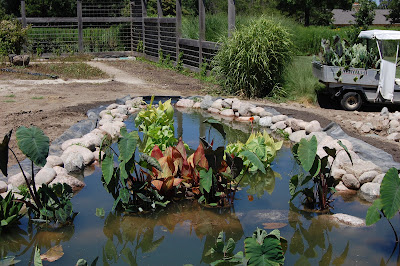The gardening “season” is, sad to say, on the wane. And now is the perfect time to make some notes, take some pictures—do a bit of garden documentation. And who better to do the reporting than you? You witnessed the successes and a few devastating blows, and if you’re even a quarter as forgetful as I am, it’s best to have something to help you remember those events.
Where to start? Pick the type of record keeping that suits your personality best because then you are apt to keep up with it. We all start the garden season with good intentions and then, mirroring the gardening season, our interests tend to wane. If you start with a system that is simple and fun for you to use, you’re sure to make better use of it for the entire season.
If we were to take a poll right here and now, my guess would be that most gardeners have attempted at least once in their gardening lives to keep some sort of garden journal. Furthermore, I would dare to guess that most of us haven’t quite “kept up with it”. Me? Guilty as charged.
Brush those guilty feelings aside (better yet—just compost them) and let’s make fun the first goal of creating your Garden Dream Book. What is a dream book? Well, it’s a conglomeration of all sorts of materials that encapsulate your dream for your garden. It will include lots of data, but other things too. This will be a fantastic way to keep track of your garden and your plans from year to year, but it’s also a goal setting process that will help you to tackle and achieve some of those “dreams” you hope for in your future garden.
Think of any of these suggestions as a cafeteria plan—you can pick and choose what you’d like to select and leave any of the uninspiring behind.
Data to keep track of:When—you sowed seed, it sprouted/germinated/emerged in the spring, you transplanted it, you moved it outside to harden off, you direct sowed seed, it blossomed/fruited, you harvested.
Where you—bought it, planted it.
What—it cost (and any guarantees that might have come with the plants), kind of fertilizers/pesticides were applied and to which plants.
How well— it fruited, you liked a particular variety (or not).
Did it have—issues with pests/diseases.
Weather—frost dates, general rainfall and temperatures as well as extremes (drenching rains, strong winds, and hailstorms.
General observations and daily activites.
Other Items to Add to the MixEmpty seed packets, plant tags from plants you have purchased.
Pictures of everything: weather, animal damage, fantastic combinations, dreary or lackluster plantings, plants that might need dividing this coming spring (basically anything and everything).
Graphed out designs of planting beds—or drawn free hand, sketches and drawings of ideas and dreams, and general doodles.
Wish lists and plans: to include things that you will buy or make (wind chimes, plants, hammock, nifty wren houses, homemade copper trellis), hardscaping hopes (a new patio, a front porch addition, a garden pond or rock garden).
Detailed information: articles and picture clippings from magazines for details and inspiration, reference materials, hand-outs from lectures and how-to classes, book lists.
Wildlife Wows: notations on wildlife visits.
Inspirational thoughts, quotes, poems or stories.
Websites and blogs you like.
Recipes that you hope to try when the harvests start rolling in from your garden.
Pulling it all TogetherMy dad was an accountant by trade and he documented the “numbers’ of everything in his landscape during the entire year: 286 dandelions pulled, 127 onion plants planted, 492 scoops of snow shoveled, etc. And he just jotted these items down on a simple wall calendar; typically one that was a freebie from the local hardware store.
This kind of documentation can be very helpful—just a simple note (first frost/late frost, drenching rains, droughts, invasions of nefarious insects and such) can help you to trigger cause and effect scenarios on the plant life in your garden.
Once again, it’s best if you pick and choose what will be the most fun for you—‘cause then you are apt to stick with it.
Garden Journals: There are plenty of cute/lovely/sturdy notebooks to jot all kinds of notes into.
Consider starting your own blog—a great place to jot down data and creative ideas and thoughts.
Choose a nice sized sketch book for your drawings and doodles—it even makes you feel more creative and artistic to draw on “good” paper.
By all means, get a digital camera if you don’t already own one—pictures are simple to delete, download and print out.
A large bulletin board can be a good grouping site for many of the above materials. It’s in your face, prompting and inspiring you to keep making additions. Even a plastic box can corral lots of the above material until you have time (maybe in the wintery months?) to organize it all.
Perhaps the best solution—and not even high-tech, is to use a simple three-ring binder. Most of the above materials can have holes punched into them for easy addition to the book. Pocket dividers help to group things in sensible categories. Envelopes or plastic sleeves/sheet protectors will keep small things like seed packets, labels and receipts handy.
Whichever method or methods you decide to adopt, I can guarantee that whatever progress you make on garden documentation, it will keep you in smiles during a dull gray winter day as you reflect back through your gardening year. And it just might give you the extra push to register for a class to make that copper trellis you’ve always wanted… Hmmm, stay posted for details regarding this copper trellis class being offered at Cantigny in 2011!















